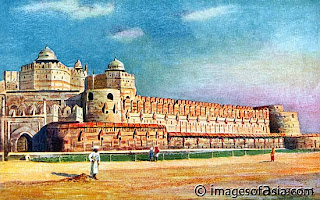In India, there is a major trend to encourage private organisations in the making of educational institutions, schools, colleges and universities.Social commitment is the most important part of imparting education, that is not sold by private companies.Profit driven organisations cannot impart education as the language used by those running the institution is business language where the student is a "prospective customer". No care would be taken in developing the intellect of the individual student; "how much profit(fees) can be extracted from him" is the main aim of the institution. In a space created by these profit driven organisations, few educational skills can be imparted. Can these institutions teach critical thinking? Can they teach rationality and logic? Can they teach good values?The chief goal of education--full development of mind of the student cannot take place in a private organisation which is striving to make money. May be few skills can be delivered, thats all. A private college can deliver few technical skills only, so that a student is "job-ready". Giving opportunity for the development of the intellectual capacity of the student is not the aim of such an institution.
Today's students are tomorrow's citizenry. They should be taught good values and be taught to make sound judgements. Students should be given chance to engage in debating different viewpoints.They should be given space for discussion in schools. Educational institutions should not just teach how to conform but teach to think critically, to think rationally and to think logically.No private organisation making profits is interested in that. Engineering graduates from private colleges know no engineering. For the money they had paid, they got degrees. They have to be retained to make them job worthy. So privatisation of educational institutions has not worked in India.Knowledge corpus is doubling every five years; so if one finishes engineering college in four years, he would be outdated as soon as he leaves college. He has to relearn his subjects, and constantly update himself on the latest developments.There are efforts taken to bring foreign educational institutions so that quality will come out of competition. Here there is already many private firms competing with one another. There is no need for more.
While vocational colleges may train candidates for job market, universities can train for higher research. Teacher training institutes have to be improved first, so that we have good teachers.Good teachers will mould whole generation of employable engineers, doctors and professors.
Today's students are tomorrow's citizenry. They should be taught good values and be taught to make sound judgements. Students should be given chance to engage in debating different viewpoints.They should be given space for discussion in schools. Educational institutions should not just teach how to conform but teach to think critically, to think rationally and to think logically.No private organisation making profits is interested in that. Engineering graduates from private colleges know no engineering. For the money they had paid, they got degrees. They have to be retained to make them job worthy. So privatisation of educational institutions has not worked in India.Knowledge corpus is doubling every five years; so if one finishes engineering college in four years, he would be outdated as soon as he leaves college. He has to relearn his subjects, and constantly update himself on the latest developments.There are efforts taken to bring foreign educational institutions so that quality will come out of competition. Here there is already many private firms competing with one another. There is no need for more.
While vocational colleges may train candidates for job market, universities can train for higher research. Teacher training institutes have to be improved first, so that we have good teachers.Good teachers will mould whole generation of employable engineers, doctors and professors.



















